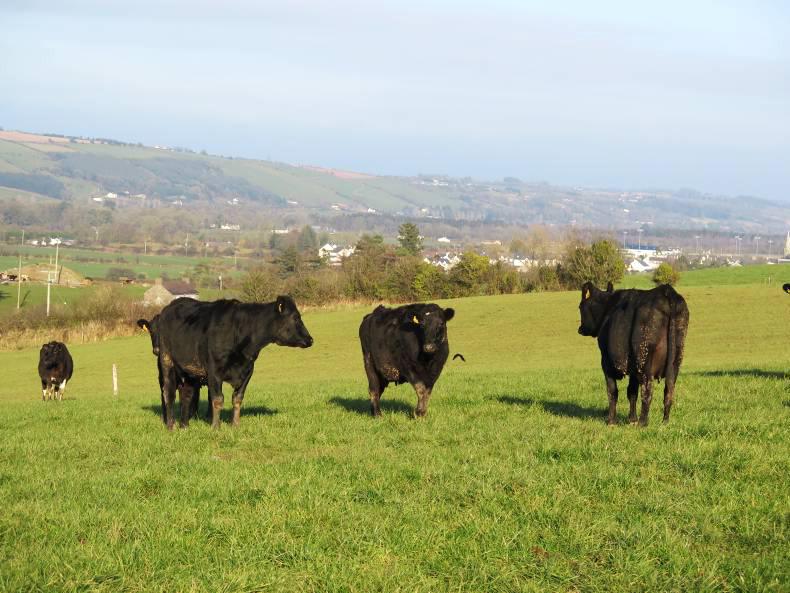The majority of Irish dairy farmers who have gone down the crossbreeding road have done so by using either Jersey or Norwegian Red sires on their Holstein Friesian herds. The resulting crossbred calf is either 50% Jersey or Norwegian Red and 50% Holstein Friesian.
This first cross animal will maximise the benefits of heterosis or hybrid vigour that occurs when breeds are crossed. In a study comparing Jersey crossbred and Holstein Friesian cows at Teagasc Moorepark, the Jersey crossbred cows delivered approximately €100 more profit per lactation than the Holstein Friesian cows, largely as a result of hybrid vigour.
One issue that regularly comes up when discussing crossbreeding is what sire to use on a crossbred cow. The most popular option is to do what is termed “criss crossing”, whereby a sire of the original breed is used on the crossbred animal. The resulting calf is then three-quarter bred. This three-quarter bred animal can then be crossed back with the other breed and the cycle continues.
However, with each cross the hybrid vigour contribution is reduced and genetic gain is coming solely from the animal’s own genetic potential as opposed to the free gain from heterosis.
One way to maximise hybrid vigour is to introduce a third cross. The third breed will help to maintain the maximum amount of hybrid vigour. There is currently a trial under way on three-way crossbreeding on the dairy research farm at Clonakilty Agricultural College. This study is examining the production and fertility performance of three genotypes – Holstein Friesian, Jersey Cross and three-way cross.
The three-way cross cows are composed of 50% Norwegian Red and 25% Holstein Friesian and Jersey, respectively. The Irish Farmers Journal visited the farm this week to get an update on the trial from farm manager Fergal Coughlan and research student Michael Dineen.
Fergal explained the design of the experiment: “When all cows are calved, there will be 120 cows in the experiment, 40 cows of each breed. The cows are grazing the paddocks involved in the grass and clover experiment.”
This is the start of the third full year of production on the Clonakilty farm. “The experiment started in spring 2013 with first- and second-lactation cows. Now, two years later, we have a more mature herd so we will expect to see the true potential of the herd beginning to express itself,” explained Fergal.
When I visited this week, over 75% of the herd had calved. Calving started on this dry west Cork farm in mid-January. Cows on the grass-only swards were out full time and getting 3kg of meal in the parlour, while cows on the grass plus clover swards were grazing by day only, getting silage at night and getting 3kg of meal in the parlour.
In 2014, in terms of milk volume, the Holstein Friesian produced 5,402kg milk/cow followed by the Jersey cross at 5,160kg milk/cow and the three-way cross at 5,023kg milk/cow. The Holstein Friesian cows produced 432kg MS, the Jersey cross cows produced 444kg MS, while the three-way cross cows produced 432kg MS.
Each group was similar in EBI terms. For 2014, average EBI was €174, with €58 coming from milk and €80 coming from fertility.
Fertility results
Firstly, it is important to point out that the fertility performance for all three groups was good, with the Holstein Friesians and Jersey crosses having exceptionally good fertility performance in 2014.
Submission rate was exceptionally high for all three groups at 95%, 95% and 98% for the Holstein Friesian, Jersey cross and three-way cross, respectively. The six week in-calf rate was highest for the Jersey cross at 92%, the Holstein Friesian cows were next at 82%, while the three-way cross cows were lowest at 73%. Scanning results showed an overall empty rate after 12 weeks of breeding of 5% for the Jersey cross cows, 7% for the Holstein Friesian cows and 10% of the three-way cross cows.
According to Fergal, there may be a number of reasons why the fertility performance of the three-way cross cows was slightly lower.
“In 2013, the three-way crosses, having come from Moorepark in the autumn of 2012, had a week later mean calving date due to the fact that breeding started a week later in Moorepark than in Clonakilty. Also, some sexed semen was used in 2013, mainly on the three-way crosses, so there may still be a hangover from that in terms of their fertility performance.”
Fergal also said that all cows are managed the same and that the submission rate and condition score was actually highest for the three-way crosses, but their six-week in-calf rate and overall empty rate was just that little bit lower.
As is the case in most long-term farm system experiments, the results presented in any one year are just a point in time. Trials like this need to run for their full duration before any definitive conclusions can be drawn and there are still at least three more years to run in this experiment.
However, based on last year’s performance, the early indications would suggest that the three-way cross of Norwegian Red, Jersey and Holstein Friesian are not going to outperform the Jersey cross or the Holstein Friesian in milk production. It will be interesting to see how they perform in subsequent lactations. The fertility results are only from one year, so it is much too early to read anything concrete into these results.






 This is a subscriber-only article
This is a subscriber-only article






SHARING OPTIONS: